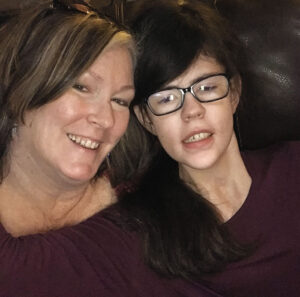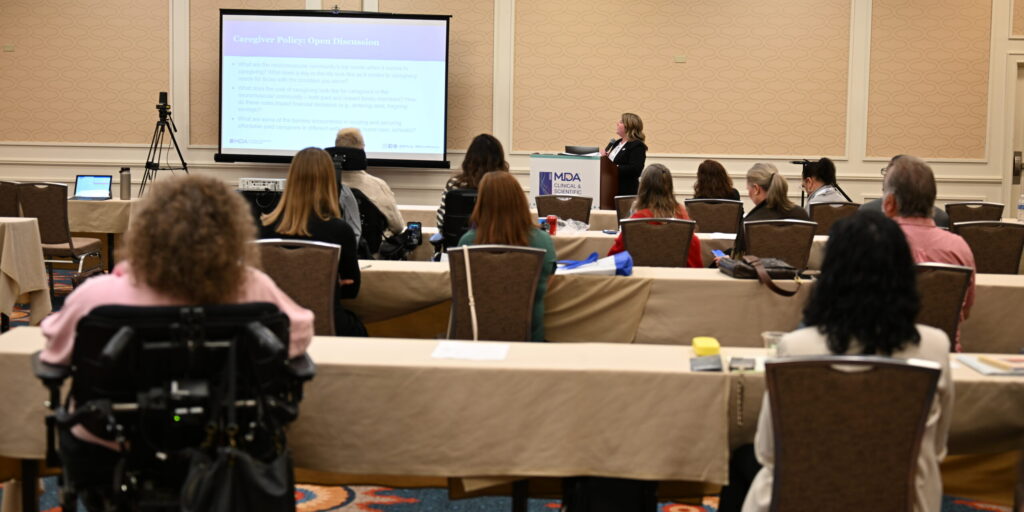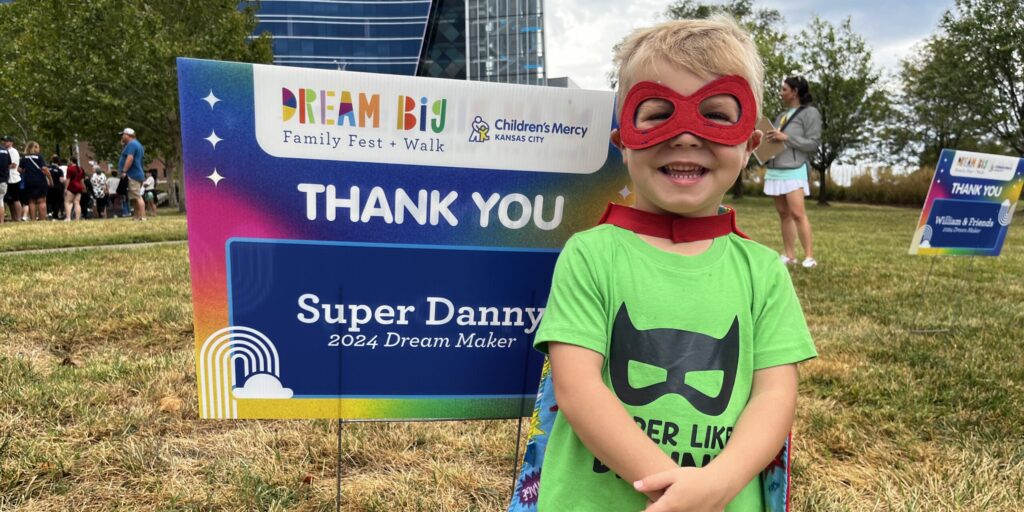![iStock-1317309906 [Converted]b iStock-1317309906 [Converted]b](https://mdaquest.org/wp-content/uploads/2022/06/GENES-iStock-1317309906-e1659970310340-1024x509.jpg)
Family Inheritance
By Amy Bernstein | Wednesday, February 16, 2022
How genetic neuromuscular disease is passed from one generation to another
In genetics, inheritance doesn’t refer to property or financial assets. It is the process by which genetic information is passed from parents to children.
Most neuromuscular diseases are genetic disorders, meaning they are caused by changes in our genes. While these changes, called gene mutations or variants, often are inherited from parents, they don’t always cause disease. For many neuromuscular diseases — and the number grows every year with continuing research — scientists have identified disease-causing gene variants. They also have been studying the inheritance patterns, meaning how a gene variant may be passed from one generation to another and how it might affect members of a family.
Knowing a disease’s inheritance pattern helps us understand who else in a family is at risk for the same condition. For example, 5q spinal muscular atrophy (SMA) is an autosomal recessive condition (see “Inheritance patterns” below), meaning a person must inherit a disease-causing gene variant from each parent to have the disease. A person who inherits the gene variant from only one parent is a carrier.
“With 5q SMA, we know about one in 40 to one in 50 people in the United States are carriers, and many don’t know it,” says Elicia Estrella, MS, LCGC, a genetic counselor at Boston Children’s Hospital. “If you have a child with SMA and find out you and your partner are carriers, then you know other family members could be carriers. You can let your brothers and sisters who are of childbearing age know, and they can get genetic testing.” A carrier of a 5q SMA-causing gene variant has a 50% chance of passing that gene variant to their child.
Inheritance patterns
Every person has two copies of each gene — one from their mother and one from their father. An inherited genetic condition can be passed along in a few different ways.
See graphics of the following inheritance patterns here.
Autosomal dominant inheritance
When someone has one copy of the disease-causing gene and displays symptoms of the condition, this is called autosomal dominant. He or she has a 50% chance of passing on the disease-causing gene variant and a 50% chance of passing on a gene without the variant to each child they have.
Examples: Myotonic dystrophy (DM), facioscapulohumeral muscular dystrophy (FSHD), limb-girdle muscular dystrophy type 1 (LGMD1), oculopharyngeal muscular dystrophy (OPMD), Thomsen type myotonia congenita, paramyotonia congenita, some types of Charcot-Marie-Tooth disease (CMT)
Autosomal recessive inheritance
In an autosomal recessive condition, a person must have two copies of the disease-causing gene variant to have symptoms. A carrier is a person who has one copy of the gene variant and typically does not show signs of the condition. When a mother and father are both carriers of the gene variant, each child has a 25% chance of having the genetic condition and a 50% chance of being a carrier.
Examples: most types of spinal muscular atrophy (SMA), most types of congenital muscular dystrophy (CMD), limb-girdle muscular dystrophy type 2 (LGMD2), Becker type myotonia congenita, Friedreich’s ataxia (FA), most metabolic myopathies, most congenital myasthenic syndromes (CMS), some types of CMT
X-Linked recessive inheritance
Females have two X chromosomes, and males have one X and one Y chromosome. In an X-linked recessive genetic condition, the gene with the disease-causing variant is on an X chromosome. Men pass an X chromosome to their daughters and a Y chromosome to their sons. Therefore, a father cannot pass an X-linked condition to his sons, but he will pass it to all his daughters. Women who carry an X-linked gene variant have a 50% chance of passing the variant to their sons and daughters. X-linked recessive genetic conditions generally are more severe in boys because they do not have a backup X-linked gene. Girls generally have milder symptoms or are asymptomatic carriers.
Examples: Duchenne muscular dystrophy (DMD), Becker muscular dystrophy (BMD), most types of Emery-Dreifuss muscular dystrophy (EDMD), spinal-bulbar muscular atrophy (SBMA), some types of CMT
Mitochondrial inheritance
Mitochondria are structures found within our cells that produce energy. Each mitochondrion contains its own small piece of DNA. All our mitochondria are inherited from our mother’s egg cell, so fathers do not pass on mitochondrial genes. Therefore, a woman who carries a disease-causing mitochondrial gene variant will pass it to all her children. However, many factors influence how a mitochondrial gene variant can affect a person, and the timing and severity of symptoms may differ from those of the mother.
Examples: Some mitochondrial myopathies, including Kearns-Sayre syndrome (KSS) and myoclonus epilepsy with ragged red fibers (MERRF)
A parent’s perspective
While knowledge is power, in the case of genetic inherited disease, it can lead to strong emotions. A parent’s instinct is to protect their child. Knowing they passed down a gene that caused a disease can lead to feeling responsible for causing the disease.
“This is not something that you have control over,” Elicia counsels her clients. “You have no reason to feel guilt or shame or anything for passing on your genes; it’s a random event.” But she acknowledges that families may need some time to come to terms with the knowledge.
“It’s easy to let yourself go down a path that makes you feel like you’re guilty for passing this along,” says Lisa Harvey-Duren, whose daughter, Kayla, was born with myotonic dystrophy (see “The Unpredictable Pattern of Myotonic Dystrophy” below). “The diagnosis was a real shock, and then I was processing that, oh my gosh, my genes have given this to my child.”

Lisa Harvey-Duren (left) learned about myotonic dystrophy when her daughter, Kayla (right), was diagnosed.
Lisa turned to her family and the friends she met in the neuromuscular disease community to help her keep perspective. “That support is so critical,” she says. “Talking with other families always seems to change my perspective. I was able to say, ‘Instead of focusing on that aspect of guilt, I’m going to focus on what I can do to help my family and help make this disease eradicated someday.'”
Elicia affirms that knowing a disease’s genetic cause and inheritance pattern ultimately is empowering. “I tell families, ‘We’re lucky because now we know what it is and can figure out how to treat you or your family best,'” she says. “Many families would then choose to do prenatal testing or other types of testing in the future. When we know it’s a dominantly inherited versus a recessively inherited condition, for example, you may have different options for family planning.”
How genetic testing helps
Many neuromuscular diseases are categorized into types and subtypes based on the gene variant that causes the disease and how that gene affects the body’s cells.
Some neuromuscular diseases do not have an obvious inheritance pattern, and some have multiple possible patterns, so working with a genetic counselor to interpret genetic test results and take a family history is important.
Genetic testing not only is used to confirm a diagnosis, but it can lead to better treatment. By revealing the exact genetic cause of a disease, it can help predict how a disease will progress and give physicians vital information for targeting therapies to an individual’s disease.
In addition, having a genetically confirmed diagnosis can open doors to participating in clinical trials and qualifying for new treatments.
You should consider genetic testing if you:
- Are suspected of having a neuromuscular disease but do not have a diagnosis
- Have a clinical diagnosis but not a genetically confirmed diagnosis
- Had a previous genetic test that was negative or inconclusive
Begin by talking with your neurologist and a genetic counselor. They will consider any symptoms you have and your family history to determine the appropriate tests to order.
At MDA Care Centers, genetic counselors often are part of multidisciplinary care teams. Their role is to guide and support patients and families who are seeking information about genetic conditions.
“When I give genetic test results back to families, I try to show them the variant and let them ask as many questions as they have,” Elicia says. Along with the rest of the Care Center teams, she is not just there to provide information, but also is part of the vital support system families in the neuromuscular disease community can turn to as they progress on their journeys.
Amy Bernstein is an editor for Quest.
The Unpredictable Pattern of Myotonic Dystrophy
Myotonic dystrophy (DM), an autosomal dominant inherited disease, is the most common form of muscular dystrophy in adults. It usually begins in the 20s or 30s, although the age of onset, severity, and prognosis can vary greatly from person to person.
This is partly because there are two types: Type 1 (DM1) is caused by a mutation, or variant, in the DMPK gene. Type 2 (DM2), which tends to be milder, is caused by a variant in the ZNF9 gene. More significantly, DM1 exhibits an unusual genetic phenomenon called anticipation.
Anticipation means the symptoms of a genetic disease begin earlier in life and become more severe as the disease is passed on through generations. This genetic monkey wrench can catch some families by surprise.
“We knew nothing about myotonic dystrophy,” says Lisa Harvey-Duren, whose daughter, Kayla, was born in 2005 with congenital myotonic dystrophy, the most severe form of DM1. Kayla did not move or cry after birth and required a ventilator with a tracheostomy and feeding tube before she could go home. “We were all dumbfounded. We learned that the congenital form usually passes down from the mom, and I had been a two-sport Division I athlete in college and didn’t have any signs or symptoms of it.”
However, after Kayla’s diagnosis, it didn’t take long for Lisa to realize that her mother’s series of falls could be signs of adult-onset DM1. Lisa and her mom both had genetic tests that looked for expanded cytosine-thymine-guanine (CTG) repeats in the DMPK gene, which is the gold standard for diagnosing DM1 and helps measure its severity. Her mother had 72 CTG repeats, which is considered higher than normal but not severe, and Lisa had slightly higher repeats at 75. “Kayla was diagnosed with 2,538 CTG repeats, which is just off the charts,” Lisa says. “It explained her severity. So the jump in the anticipation from me to Kayla was huge.”
This is part of the confounding inheritance pattern of DM1. While it is known to become more severe when passed down from mother to child, it is an unpredictable advance. It can even affect siblings who inherit the disease-causing gene variant differently depending on how large the gene repeat becomes and how it alters the function of the cells.
“It’s unknown why we see anticipation expansion grow to a larger or smaller extent,” says Elicia Estrella, MS, LCGC, a genetic counselor at Boston Children’s Hospital. For many people with adult-onset DM, the signs and symptoms progress slowly and might not be recognized for years. That’s why it’s important to look at whole families when one family member is diagnosed with DM. “When we see it, we can talk to families about the risk to other family members,” Elicia says.
After Kayla’s diagnosis, Lisa reached out to all her first cousins on her mother’s side to let them know about the risk of passing this disease in the family. She now knows of other family members diagnosed with DM.
In addition to revealing DM in the family, which allowed them to learn about and deal with the disease, Lisa says that Kayla’s life was a gift.
Kayla was not expected to live past her first birthday, but she defied the odds, living to 13 years old and proving she was much more than her disease. “She was able to learn, she was able to thrive, she was super happy, and she made a lot of friends,” says Lisa.
Next Steps and Useful Resources
MDA has more resources to help you learn about genetics and genetic testing.
- Genetics and Neuromuscular Disease
- Basics of Genetic Testing
- How Genetic Neuromuscular Disease Happens
For more information about finding genetic testing, including available no-cost programs, contact MDA’s Resource Center at 833-ASK-MDA1 or resourcecenter@mdausa.org.
TAGS: Featured Content, Gene Therapy, Genetic Testing, Healthcare, Research
TYPE: Featured Article
Disclaimer: No content on this site should ever be used as a substitute for direct medical advice from your doctor or other qualified clinician.




